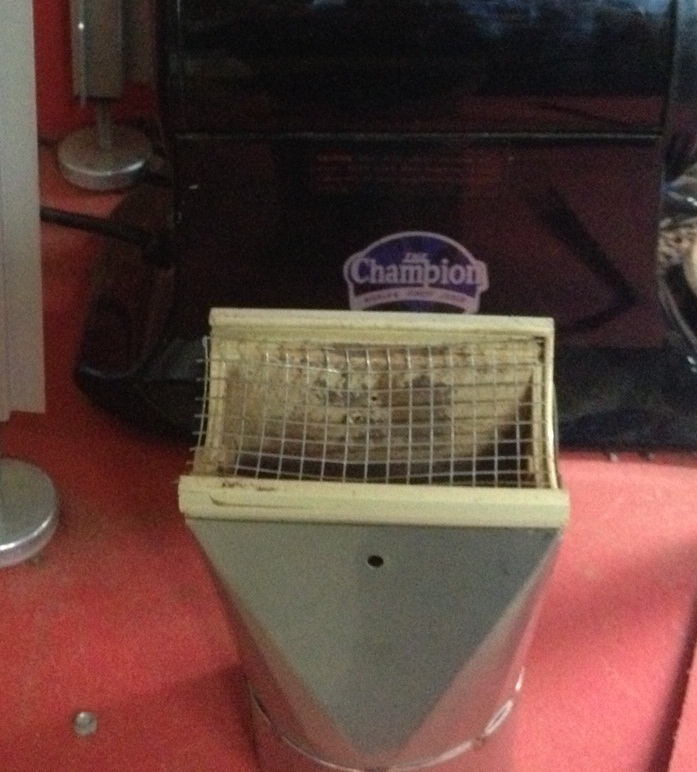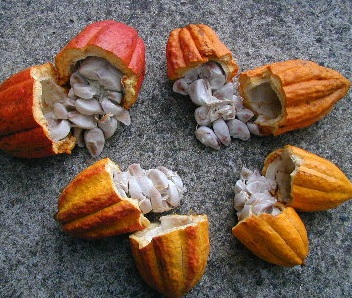This video shows that I can use a spice grinder but you say it won’t work. I don’t understand. How did this guy do it with a spice grinder, then?
https://www.youtube.com/watch?v=kUjc6fLnfmM
What I could really use, though, is a more complete shopping list. Besides the melanger, what is the complete set of equipment I should invest in at this point to get started?
What is the bare minimum equipment I need to make chocolate?
A number of people have sent me that video and I’ve wanted to comment on it for some time, so now it is. I personally feel it is misleading in a number of ways. Since you can’t taste or feel the chocolate he makes you really can’t appreciate how little like chocolate it is. I will grant he mentions it is kind of coarse but the lasting impression is that I get from it is that you really only need a few items that are available in most kitchens to ‘make chocolate’ and that sadly just isn’t so.
I will say it is a nice over view. You see roasting and getting the nibs clear of the husk and the basic steps to make a tiny amount of gritty chocolate. But from a practical stand point it is novelty level only. It isn’t practical for any real amount of chocolate. He is making a few ounces. And I will bring up one major pet peeve I have about it which is down right bogus. His bit on conching. Stirring your ‘chocolate’ around in mortar and pestle for a few minutes is NOT conching. No way. No how. It’s the equivalent of getting out of your chair and stretching and calling it yogi level yoga. Sorry, no.
Regardless, it does give me a place to jump off and make a few things clear. Definitions really. When I talk about making chocolate, that is what I mean. Smooth, silky, modern chocolate. And even ‘make’ I will talk about. I’m meaning both a significant (over a pound) amount of chocolate and in a way the is reasonable easy (no hand peeling of beans) and not ridiculously onerous (like using a mortar and pestle) and does not destroy equipment after only a couple uses. Basically something approachable.
Using those pre-requisites, a spice grinder fails the litmus test of making chocolate on all levels. It can only process a few ounces. It does not make modern smooth chocolate. It can easily burn out. And where I am counting you lose with one failure, this is a full three strikes you are out.
That all said, on to the next part of the question. It turns out it is not an easy answer. It’s full of choices and some are easier, but cost more. Some are more laborious (but still not onerous) but will save you some cash. It’s your call. And there are different stages you can start. But hopefully after reading this, you will at least have the information to make those choices.
There are four basic processes you need to perform. You need to roast. You need to crack. You need to winnow. You need to refine and conche.
Roasting: You can roast in your oven. I don’t know anyone who lives in a house that does not have one. It is a little more tricky (turning the beans, changing temperatures, etc) then having a dedicated roaster, but it’s free since you already own it. Certainly feel free to use it are just getting into this. Or if you decide you want to hold off on cracking and winnowing and are buying raw nibs. So bare minimum. Nothing extra. But a roaster (the Behmor 1600 is really the only one on the market that will do it) is great and easy and repeatable. That is $299.
Cracking. Let’s start off saying I am not going to suggest you hand crack the beans. It’s a pain. Technically you could put the bean in a bag and do the rolling pin thing but I’ve tried it and it just isn’t user friendly and gets old quick. As mentioned in the roasting part, you can always just buy nibs at first. If you do that, you are again at the bare minimum of no extra equipment since you can skip this step. But say you do want to go for the whole process. In times past I would have suggested the Crankandstein cocoa mill, but those are currently not being made. After that, the Champion juicer is your other alternative. Leave the screen off and it cracks the beans just great. And there is the added advantage that it will make liquor if you want. That is $265. I’ll note that I’ve tried food processors. Pulsing them and such and they just don’t do the job. Maybe you will have better luck but I always made too much dust and lost a lot of good product.
Winnowing. You really have two options here. Either you do it by hand with a bowl and blow dryer or you buy a sylph winnower ($195). Hand peeling I already mentioned is just a pain. But I used a bowl and blow dryer for years. It’s a touch messy, but not that hard. Or to repeat, if you went with nibs to start, this step gets skipped.
Refinging/conching. You have one option here (with two choices). You need a Melanger. No if, ands or buts about it. If you are going to make modern chocolate, there is NO SUBSTITUTE. NONE. I’ve tried different equipment for 10 years. I won’t say something else might turn up, but know right this moment, no other ‘basic’ kitchen equipment will do the job. Really. Think about it. Ask yourself why would I hide that information if I had it? Seriously. There is no conspiracy to hide the truth from you. I’m not hiding it because I want you to buy what I sell. I WANT YOU TO MAKE CHOCOLATE! I make very little on the Melangers. If I could offer you another alternative, which in turn would allow you to buy more beans, don’t you think I would put it out there? There, I’m off my soap box. You need a melanger. Your choice is then scale. There is the smaller Premier for $195 or the larger Spectra for $479.
There. Here is the quick run down.
If you want to take baby steps (and that is totally cool) you should buy nibs and roast them in your oven and get a Premier Grinder.
Total minimum: $195.
If you want to go 100% bean to bar, you need at the minimum,
- Your oven $0.00
- Champion : $265
- Winnowing: Bowl and blow dryier.
- Refining: Melanger. $195 or $479.
- Total minimum: $460
And finally, if you want to do it ‘easy’ and have the cash, then go for:
- Champion: $265
- Behmor: $299
- Sylph: $195
- Melanger: $195 (or $479 but we are still holding to ‘minimum’)
- Total Deluxe minimum: $954
I hope that helps and clears things up a bit.
—– Submit your Questions to the Alchemist: question(youknowtoremovethisright?)@chocolatealchemy.com —–











